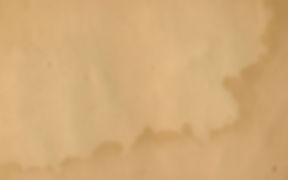
BLACK MOUNTAIN COMPLEX PETROGLYPHS
Recovering Indian history from ancient Native American rock writings.
-
“...I doubt whether any of the specific incidents were really handed down by tradition.”
-
“In short, the story is pseudo-history. It is a product of imagination...”
-
“All the people and events of the long story I consider to be a fantasy...”
-
“The successful attainment of an appearance of history in a fantasy creation...”
-
“The story is not only lengthy, circumstantial and involved, but full of strange and long names of places and names of personages...”
-
“Moreover, some of these personages disappear from the narrative for extended stretches and then reappear without notice.”
Factual: The number of words indicating that the information has factual context, *one.
Historically oriented Editorial Comments: Kroeber editorializes on the factual historical context of the Mojave history a total of only 4 times:
-
“The story is therefore *factually sober.”
-
“As regards its content and form, it might well be history.”
-
“The historic-mindedness of the story is further evidenced by the consistent 'nativeness' of the culture depicted: wheat, chickens, red cloth, white men are never even hinted at...”
-
“No purist ethnographer reconstructing the old culture could have been any stricter than Inyo-kutavêre.”
In the entire three pages of the introduction, only 9% of the narrative expresses a positive opinion of the information presented by the informants/interpreters as historical, and 91% focuses on the information recorded as fantasy or imaginative story telling. The disproportionate nature of the fantasy vs. historical commentary, in a narrative which should have had a neutral, scientific context, is uncharacteristically lopsided in favor of fantasy. The repetitious overkill combined with the insertion of two irrelevant sections regarding real estate holdings and an unnecessary evaluation of clan relationships or corporate identities suggests perhaps Kroeber had ulterior motives to his expressed intent of the introduction as an entertaining background story of how he collected the data.
It may be pure coincidence that Kroeber began his investigation of the Mohave historical epic [including landholdings and corporate identity] around the same time he was hired, purportedly, to maintain the collection of the questionably acquired artifacts belonging to Phoebe Apperson Hearst.
Kroeber may have been brought to the University of California “by Phoebe Hearst”; but Kroeber’s focus on the Mohave landholdings and their corporate identity strongly suggests that Kroeber was being secretly financed, through the efforts of Fredrick W. Putman, a fundraiser from New York, by George Hearst, Phoebe’s husband and “self-made millionaire”. The same George Hearst who had a mysterious knack for finding gold mines and quickly selling them for enormous profit, a strategy that worked many times over. During his two years as a California State Assemblyman, George acquired
The purpose of this site is to inspire awareness, preservation and research of all rock art/writings. As the site grows and develops, it is hoped that YOU will help in these efforts by submitting questions, comments and suggestions: Our primary means of communication is the 'Contact' button above.
© 2023 by My site name. Proudly created with Wix.com